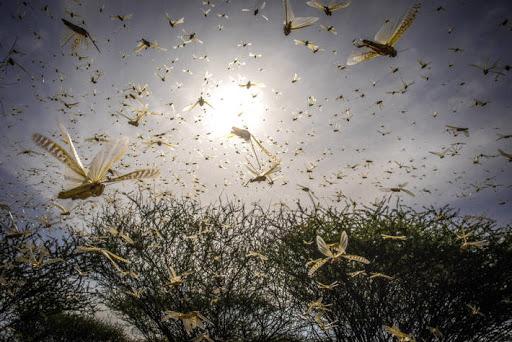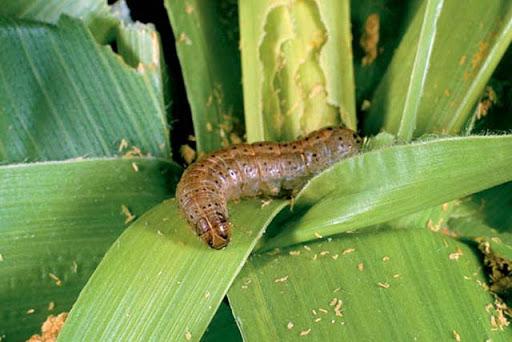- Africa’s new dawn: the rising role of digital and AI in agriculture
- Can Dangote Refinery Transform Africa Energy Ambition
- Gallup Survey: 80 per cent of Kenyan Workers Are Disengaged and Seek New Opportunities
- Madagascar Man Freed from 5KG Tumor After 15-Year Struggle
- How women in Africa are perceived and treated
- Sugar consumption in Kenya to Increase to 1.23 Million Tonnes
- Can Somalia and Turkey Oil deal Bring Change in Somaliland
- Remittances to Kenya dropped to $371.6 million in June, marking a six month low
Browsing: Desert Locusts
The number and size of desert locust swarms in Ethiopia and Kenya has decreased significantly between January and March this year. While this is indicative that good progress has been achieved, particularly in Kenya where swarms are no longer arriving from the north, the FAO still cautions that the situation in northern Somalia is still dire, given that the swarms and hopper bands invasion are still persistent.
This is according to an analysis by Food and Agriculture Organisation (FAO) which also states that the decline is as a result of sustained control operations and delayed locust breeding due to limited rainfall. …
Better prepare East Africa: desert locust threat is not over
By Kawira Mutisya
The Food and Agriculture Organization (FAO) is seeking funding to continue with its fight against desert locusts in Eastern African countries affected by the menace.
Ethiopia, Kenya, Somalia and Sudan continue facing a threat from the desert locusts. According to a statement from FAO, action to control unprecedented desert locust infestations in the Horn of Africa last year has succeeded in protecting crops and livelihoods. The UN agency is now seeking $38 million funding to sustain operations against new incursions and continue work in these countries.
FAO says that this is urgent because without this support, the 28 aircraft that patrol the skies to spot and spray swarms could be grounded as early as March.
In the latest desert locust invasion update by FAO, swarms continue to invade the Horn of …
The Food and Agriculture Organization of the United Nations (FAO) is increasing efforts aimed at bolstering the global response to Fall Armyworm (FAW), considered one of the top 10 devastating plant pests affecting food and agriculture.
According to a statement from the organisation, the Director-General, QU Dongyu, noted today that great strides had been made by the Global Action for Fall Armyworm Control (GA), a coordination mechanism established by him a year ago, but emphasized that many challenges remain to be tackled in the sustainable management of this pest.
Speaking at a virtual meeting of the Global Action’s third steering committee, the Director-General noted FAW’s reach was expanding, noting that it had been reported in four new countries in Asia and the Near East.
FAW is a voracious transboundary insect which targets maize and other food crops. Originating in the Americas, it invaded Africa in 2016 and has spread …
Food and Agriculture Organization (FAO) received €11 million contribution from the European Union as the UN agency steps up efforts to fight the desert locust outbreak.
FAO Director-General QU Dongyu received the contribution to help fight the locust upsurge which has now spread from East Africa to the Persian Gulf.
The European Commission announced that €10 million would come from the European Commission’s Directorate-General for International Cooperation and Development (DEVCO). While another €1 million will come from the European Civil Protection and Humanitarian Aid Operations (ECHO).
“I want to thank the European Union for its generosity and support as the Desert Locust threatens to provoke a humanitarian crisis in East Africa,” Qu said.
Qu also added that the situation is extremely alarming in a region where 20 million people are already considered food insecure.
The locust outbreak is the worst in the last 25 years for Ethiopia and Somalia and …
Uganda’s Cabinet approves an extra $1.8 million to help fight the locust invasion.
This was after it came to be known that $3 million of the initial $4 million released for the same purpose was used to pay membership arrears to the Desert Locusts Control Organisation for East Africa (DLCO-EA).
DLCO-EA draws membership from Uganda, Kenya, Tanzania, Ethiopia, Sudan, South Sudan, Eritrea, Somalia, and Djibouti.
According to the EastAfrican a local news platform, Uganda still owes the organisation an extra $2 million even after paying the arrears, Uganda, together with Sudan, Eritrea and Somalia, are the main defaulters.
According to the EastAfrican, the Country Representative for DLCO-EA, Mr Evarist Magara said that each member partner is supposed to pay $120,000 per year. Adding that Uganda’s debt had grown to $5 million accumulated over nearly 30 years of non-payment. Sudan also owes $6 million to the regional organization.







